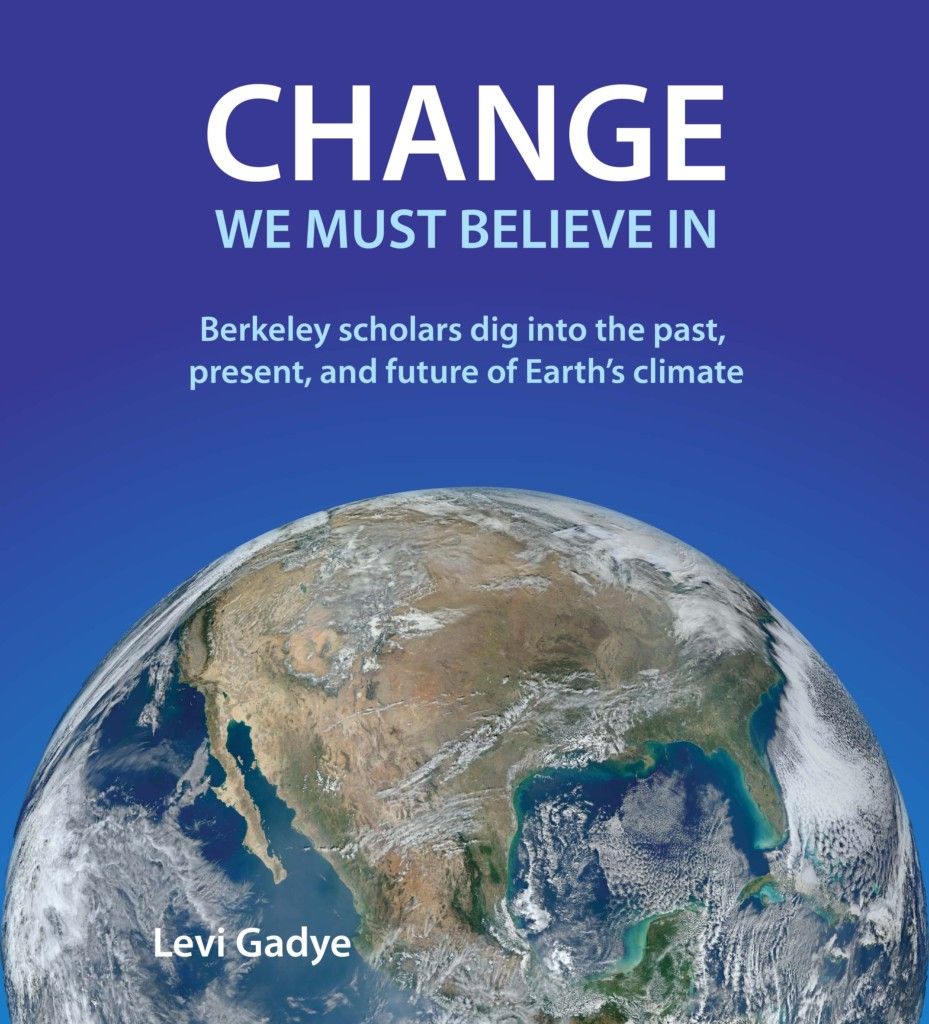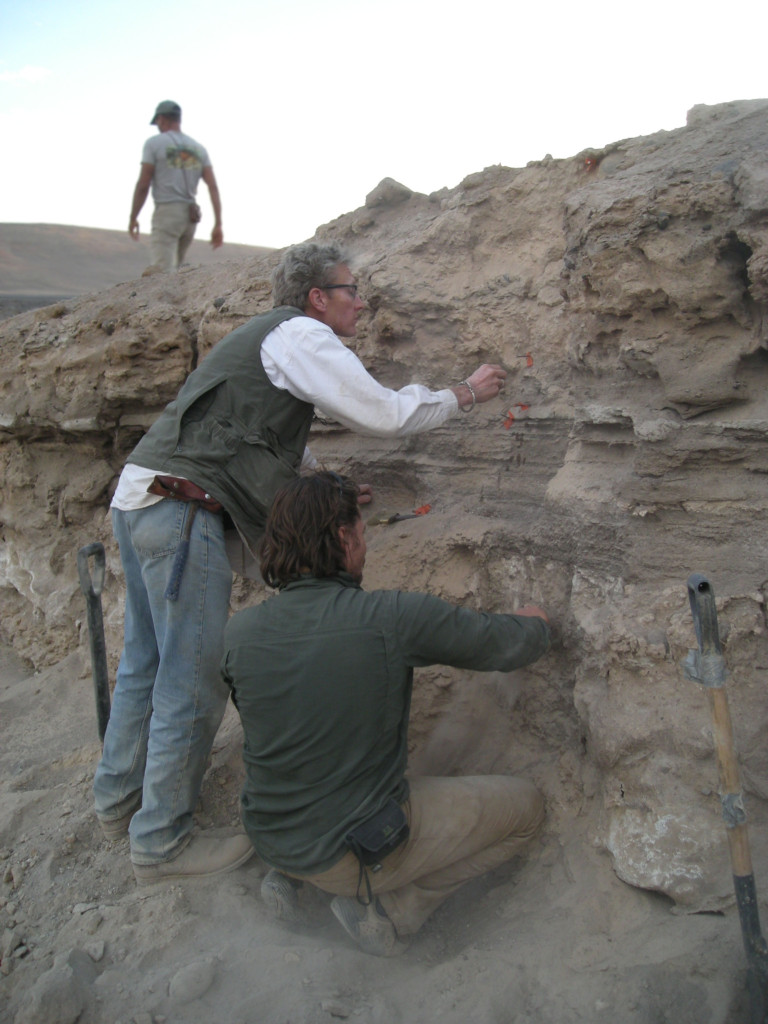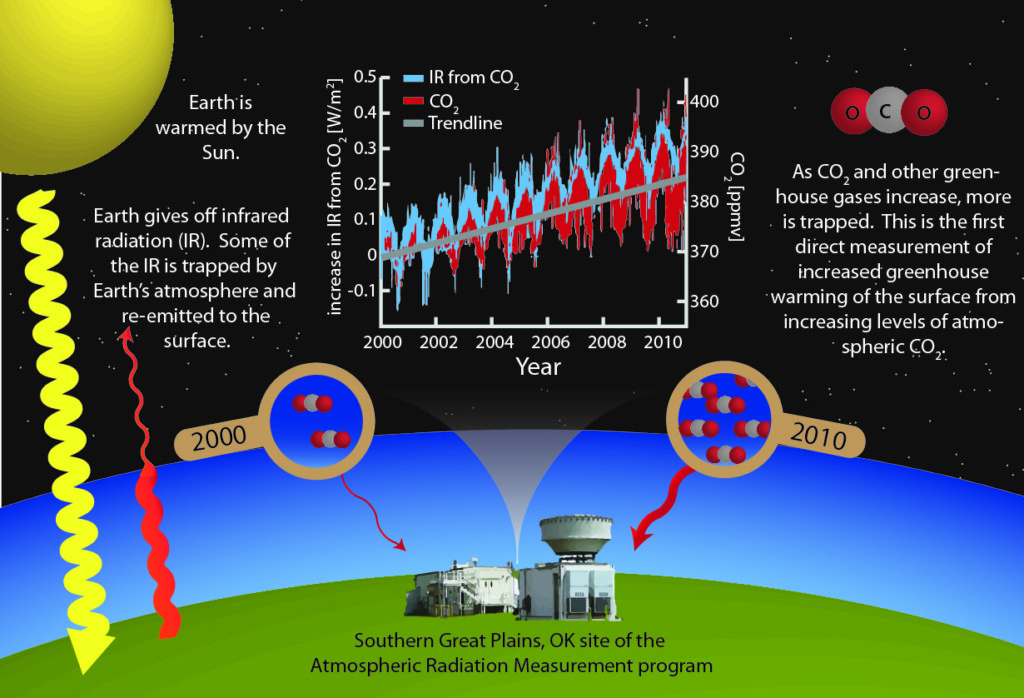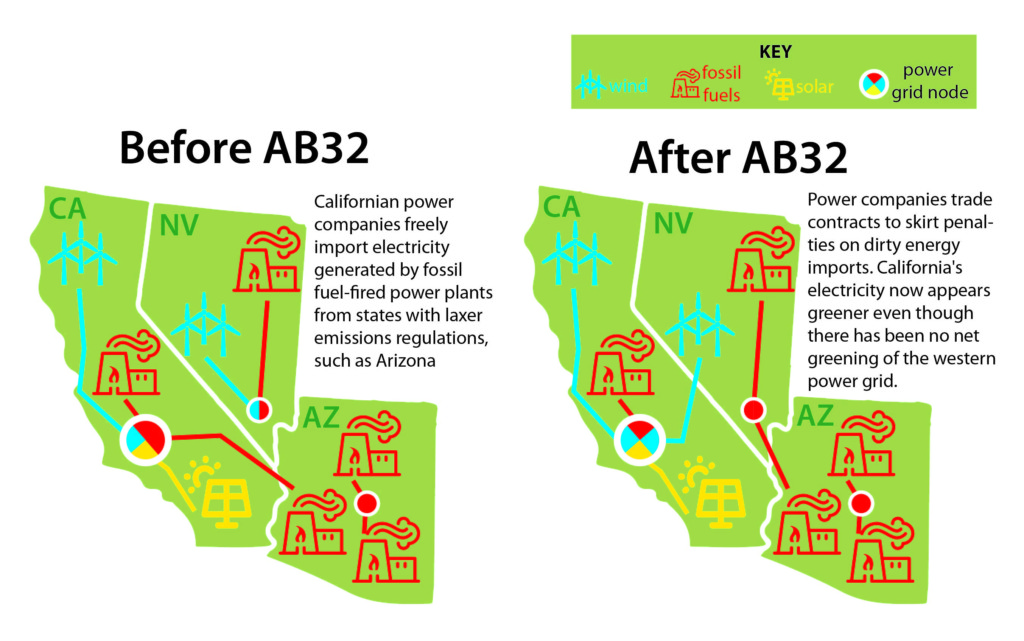
Optimism was in the air in California on the evening of January 9, 1862. Leland Stanford, a business tycoon who would later found Stanford University, awaited his inauguration as the state’s next governor in the newly built state capitol in Sacramento. California was suffering from a long drought that predated the Gold Rush, so the arrival of heavy-looking clouds that evening was welcome.
By the next day, so much rain had fallen in Sacramento that Stanford was forced to take a rowboat from his mansion to the statehouse for his inauguration. Two weeks later, the Central Valley was a lake and Sacramento was still a floodplain of muddy water, debris, and the occasional second floor of a two-story building. The state government relocated to San Francisco. Even three months later, Sacramento remained flooded and largely uninhabitable, paralyzed by a whim of the climate.
Today, you’d be hard pressed to find many Californians familiar with the megaflood of 1862—a level of flooding that we now know has occurred no more than once every 150 years. But as the climate warms globally, thanks to the greenhouse effect of over a century of fossil fuel emissions, the likelihood of extreme weather events such as prolonged droughts and megafloods grows.
Despite California’s short-term memory of the history of its climate, however, the state should be proud of its support of the world’s leading climate scientists and its pursuit of friendlier climate policies. Berkeley’s paleoclimatologists and ecologists are hunting near and far for clues of past climates and signs of health and distress in modern ecosystems. UC Berkeley atmospheric scientists recently proved that rising levels of carbon dioxide (CO2) are directly warming the planet, validating the predictions of a century of theory, experiment, and modeling. Meanwhile, UC Berkeley chemists, lawyers, and economists are cooking up new fixes for climate change, from the technological to the political. If we’re going to weather climate change with any degree of dignity, it’ll be no small thanks to efforts occurring on the UC Berkeley campus.
A tempestuous past
The history of Earth’s climate is written in the chemical composition of ice, marine sediments, and stone. Lynn Ingram, UC Berkeley professor of geography and earth and planetary science, likens paleoclimatology—the study of ancient climates—to detective work: she gathers “whatever evidence is remaining” and works out clever ways to translate physical attributes of natural artifacts into knowledge of Earth’s distant past.
Ingram studies the paleoclimate through the lens of marine, estuarine, and lake sediments, which can reveal how CO2 concentrations, temperature, and precipitation varied over thousands of years. Analyses of sediments like these by Ingram and colleagues have shown that the megaflood of 1861 was no anomaly, but rather an infrequent tendency of California’s climate that modern developers and residents of the Central Valley haven’t accounted for. “If people understood the history of it, even the much more recent example of smaller floods, clearly the Central Valley is not a place that you want to be developing,” Ingram says.
Kurt Cuffey, professor of glaciology at UC Berkeley, uses the stark example of North America’s ice sheets to illustrate the scale of ancient climate change in places many of us are now familiar with. “Just 20,000 years ago, the site that is now Boston was under a kilometer of solid glacial ice,” he tells his students. Cuffey’s work, using ice cores collected from the depths of polar glaciers, has helped demonstrate that CO2 levels rose in the last 20,000 years, warming the globe through the same greenhouse effect that is responsible for modern climate change. This previous instance of global warming melted enough ice for the first humans to settle the Americas, and it made agriculture more viable, permitting ancient empires to thrive.
 Ron Amudson (left) hunts for clues of past inland climates, such as pedothems, in the Atacama Desert, Chile, alongside ESPM graduate student Marco Pfeiffer (right). Photo credit: Erik Oerter
Ron Amudson (left) hunts for clues of past inland climates, such as pedothems, in the Atacama Desert, Chile, alongside ESPM graduate student Marco Pfeiffer (right). Photo credit: Erik Oerter
Ingram and Cuffey’s work represents just the tip of the iceberg of the stories written in the planet’s geological stores. UC Berkeley Professor of Environmental Science, Policy, and Management (ESPM) Ron Amundson recently unveiled a new method for studying certain types of rocks that are commonly found in deserts. These rocks, dubbed pedothems by Amundson’s former graduate student Erik Oerter, contain microscopic layers of calcium carbonate that formed as rain percolated through the ground, leaving traces of ancient soils that can be linked back to specific climatological eras in the last 350,000 years. “The carbon isotopes directly reflect the abundance of vegetation growing at the site; the oxygen isotopes tell us something about the regional temperature, as well as where the rainfall is coming from; and the uranium isotopes tell us how much water has been leaching through the soil,” Amundson explains, giving scientists a peek into the history of inland climates.
His team’s methodology revealed that gigantic ice sheets, like those that Cuffey studies, can transform weather patterns thousands of miles away. Using pedothems collected in Wyoming, Amundson and Oerter demonstrated how cool air hovering over the North American ice sheet rotated the direction of continental wind patterns from west-east to south-north tens of thousands of years ago, dousing the central US with warm water picked up from the Gulf of Mexico.
As glaciers retreat, once-reliable weather patterns may shift in surprising ways, forcing everyone from farmers to airlines to adapt to new norms in precipitation, temperature, and the direction of the wind. Clearly, we have only witnessed a fraction of the potential consequences of a more volatile climate.
Carbon, caught in the act
Though humanity has speculated on the factors controlling the weather and climate for ages, the scientific hypothesis that human industry is warming the climate is just a century old. Svante Arrhenius, a Swedish scientist, was the first to quantify the potential of atmospheric CO2 to trap the sun’s radiation on Earth, a phenomenon he predicted would cause global warming as humans continued to burn fossil fuels. Arrhenius’s calculations, published in 1896, sparked international efforts to better understand the greenhouse effect, efforts that continue today.
At the turn of the century, scientists like Arrhenius focused on how well CO2 absorbed infrared radiation—known to be emitted by Earth’s sun-warmed surface—in laboratory settings. “CO2 absorbs the energy right at the peak of emission of Earth’s [thermally emitted] energy,” indicating that CO2 is a greenhouse gas, says Dan Feldman, a radiation research scientist at Lawrence Berkeley National Lab (LBL). If CO2 levels were to rise, the thinking went, more of the sun’s energy would be trapped at Earth’s surface, leading to global warming. But how much CO2 was in the atmosphere? Moreover, were global CO2 levels rising proportionally to the burning of coal and other fossil fuels?
In 1958, atmospheric scientist Charles Keeling began recording CO2 levels from the pristine environment on top of Mauna Loa, a volcano in Hawaii, as well as in La Jolla, California, and Antarctica. In just three years, Keeling published the first reliable observations of atmospheric CO2 levels rising by about 1 part per million (ppm) every year—and noted, dryly, that “at the South Pole the observed rate of increase is nearly that to be expected from the combustion of fossil fuel.” He predicted that his findings would be further validated with just a few more years of observation.
Indeed, over the last 50 years, as we have continued to burn fossil fuels, the CO2 levels in the “Keeling curve” have reliably crept upwards—the rate of increase is now more than 2 ppm per year—and global temperatures continue to rise. However, until recently, the link between atmospheric CO2 levels and rising temperatures had yet to be proven beyond strong correlation. Could the greenhouse effect be observed in action?
 Design: Levi Gadye, Jake Seeley, Lauren Borja; Photo (SGP): ARM Climate Research; Data: Reprinted by permission from Macmillan Publishers Ltd: Nature, doi:10.1038/nature14240vv, copyright 2015
Design: Levi Gadye, Jake Seeley, Lauren Borja; Photo (SGP): ARM Climate Research; Data: Reprinted by permission from Macmillan Publishers Ltd: Nature, doi:10.1038/nature14240vv, copyright 2015
In December 2014, Feldman, along with the now-director of LBL’s Climate and Ecosystems Science Division, Bill Collins, published the first direct observation of the increasing greenhouse effect of CO2 outside the laboratory. The team combined a theoretical understanding of the quantum mechanical properties o f CO2—how CO2 “wiggles and jiggles,” as Feldman puts it, in response to infrared radiation—with 10 years of field observations of downward infrared radiation at two ground-based sites, one in Alaska and another in Oklahoma. Feldman and his colleagues used data on local weather conditions and cloud cover to subtract out unwanted variability, thereby isolating the spectroscopic signatures, or fingerprints, of radiation from CO2 alone. The team found trends in the amount of radiation bearing these fingerprints that indicated an increase in CO2 of 22 ppm over the 10-year observation period—exactly the amount that CO2 concentrations were observed to grow during this interval. CO2 had been caught red-handed, warming the planet by more and more each year.
Overlaid with paleoclimate reconstructions from the likes of Ingram, Cuffey, and Amundson, Feldman’s proof of the growing greenhouse effect makes it abundantly clear that we can expect dramatic changes in the future climate. “CO2 has fluctuated with the glacial/interglacial cycle,” Ingram says, “but we can see that we’ve gone way above what any natural level has been over the last couple of millions of years.” Additionally, because the rate at which we’ve added CO2 to the atmosphere outpaces CO2 fluctuations in paleoclimate records, there is no precedent for what to expect. We’re steering into uncharted territory on a ship whose riggings we are just beginning to understand.
Our capricious climate’s many facets
When Keeling nailed down his first measurements of CO2, his numbers were already about 10 percent above the CO2 levels glaciologists had been finding in ice cores representing pre- Industrial Revolution climates. Even back in 1958, plugging these CO2 levels into available climate models—computer simulations of the interactions between the sun, atmosphere, land, ocean, and ice—revealed the ominous possibility of significant global warming by the end of the 20th century.
But accurately projecting the future of Earth’s climate is complicated due to so-called climate feedbacks. In fact, the effects of warming temperatures on just two additional factors—snow on the ground and water vapor in the air—are expected to double the amount of warming caused by CO2 alone, according to Cuffey. As white, reflective snow melts, the darker soils underneath absorb more of the sun’s heat, compounding global warming. Similarly, water vapor in the atmosphere, the amount of which increases as the climate heats up, actually provides more of Earth’s total greenhouse warming than CO2 itself. CO2 may be a trace gas, but thanks to feedbacks like these, which amplify the warming effects of CO2, the climate is acutely sensitive to small changes in CO2 concentration, such as an increase from 0.03 percent to 0.04 percent atmospheric CO2—the approximate increase the world has seen in the last 150 years. “It’s not like you’re hitting Earth with a hammer,” Feldman says, of rising CO2 levels. “You’re pushing it with a feather, continuously batting it with this feather, and Earth will move pretty far if you push it as we’re doing.”
 Design: Levi Gadye, Jake Seeley, Lauren Borja; Photo (mountain): ARM Climate Research: Photo (low clouds): Neil Howard; Photo (high clouds): ARM Climate Research
Design: Levi Gadye, Jake Seeley, Lauren Borja; Photo (mountain): ARM Climate Research: Photo (low clouds): Neil Howard; Photo (high clouds): ARM Climate Research
As computers improved, and as scientists incorporated feedbacks involving snow and other processes into their climate models, their predictions became more consistent—and global warming inched from possibility to inevitability. By the mid-2000s, any scientific doubts about global warming had all but vanished. In 2005, Cuffey penned an Op-Ed in the San Francisco Chronicle summing up this subtle shift in how scientists perceived the threat of global warming. “There is now no reasonable doubt that atmospheric pollution is causing global warming, and this warming is strong enough to have serious consequences in the next century,” he wrote.
But the need to improve our computer models of Earth’s climate remains. Ian Bolliger, a dual-degree graduate student in the Energy and Resources Group (ERG) and systems engineering, studies variation in the Sierra snowpack. “With the global weirding of weather [thanks to climate change],” he explains, “it’s important to know how much snow there is, especially for regions that depend on snowpack for water, like California.” Using raw data on the Sierra snowpack that was collected by scientists at NASA/Caltech’s Jet Propulsion Laboratory, Bolliger is now modeling how features like slope angle, orientation, and canopy cover influence how snow accumulates and melts across the mountain range, providing an unprecedented look into the evolution of snowpacks from fall to spring.
There are many more environmental factors important for determining the behavior of the climate that remain poorly understood. Professor David Romps and colleagues, for instance, are working on modeling clouds (see “The other cloud computing,” BSR Fall 2015), which can either worsen or alleviate global warming depending on their altitude and opacity. “It’s not just a question of if there are more or fewer clouds,” says Cuffey. “It’s a question of what types of clouds are present. The high cirrus clouds tend to warm the planet, while the low stratus clouds, [which reflect the sun’s radiation], tend to cool the planet.”
Feldman has moved on to the “wiggles and jiggles” of another gas, methane, which is “on a per molecule basis, a much stronger greenhouse gas [than CO2].” Other scientists are concerned that glacial melting in polar regions will lead to the release of immense amounts of methane, as soil bacteria awaken from their frozen slumbers to metabolize now-thawed organic material, like dead plant matter—another feedback that could exacerbate global warming. Bolliger contributed to a project headed by Margaret Torn, a professor at ERG and LBL, in which this feedback was modeled on a small scale: soils were artificially heated up and methane levels were measured nearby, producing data that has sharpened our models of the climate feedbacks generated by melting permafrost in the Arctic.
Until we adequately account for snow, water vapor, clouds, methane, and beyond in our climate models, we will have to cope with disconcerting uncertainties about the degree of global warming we can expect. Regardless, global warming is coming whether we fully understand it or not.
Change is here
Barring some cataclysmic cooling of the sun, our use of fossil fuels has ensured global warming that will impact many generations to come. The four biggest challenges that Cuffey foresees for humanity, in no particular order, are “sea level rise because of ice melt; changes in severe weather, such as heat waves; potential decimation of our food supply; and spreading of diseases.” On cue, these challenges are quickly becoming our new reality.
In 1978, glaciologist John Mercer predicted that the disintegration of ice shelves on the shores of West Antarctica would portend dangerous global warming—and that these ice shelves would collapse from north to south. Today’s visitors to Antarctica can witness building-sized chunks of ice calving—breaking free from glaciers as warming waters eat away at their underbellies—in the very order that Mercer predicted. According to Cuffey, when these glaciers slide fully into the ocean in the next couple centuries they will raise sea levels by several meters. Meanwhile, flooding has already become much more routine in low-lying places, from Bangladesh to Miami.
Some kinds of severe weather are also occurring more frequently, creating a ripple effect of instability for all the planet’s inhabitants. John Battles, UC Berkeley professor of ESPM and forestry, is acutely aware of the impending change confronting the world’s forests. “We’re going to replace species. Some are going to go up the hill, some are going to go down, some will move north. If you’re at the top of the mountain, you can’t go up any higher,” he says. “Those populations might disappear.”
While the reshuffling of many species, particularly those who depend on reliable timing of the seasons, is likely to occur with global warming, trees themselves are remarkably resilient to simple temperature fluctuations. “The trees that are here today have survived the evolutionary game— they’ve had ice-covered planets, they’ve had warm planets,” Battles explains. However, secondary effects of climate change, like the rising risk of forest fires, could decimate these evolutionary marathoners, jeopardizing entire ecosystems that depend on them. “Events that remove a lot of the tree population [at once] are the ones that you need to worry about,” he says.
Here in California, where logging bans and fire suppression policies have led to the buildup of huge numbers of densely-packed trees, drought and rising temperatures are now stoking record-breaking forest fires. “These are fires that are so big that they begin to create their own weather,” says Battles. Many scientists have long argued that small natural fires should be allowed to burn, and that controlled burns should be practiced, with the intention of thinning out these dense forests and preventing megafires. Unfortunately, the conflicting (and well-intended) agendas of the US Forest Service, air quality regulators, and environmental activists have stymied scientific calls to let some fires burn, and Battles doesn’t see a clear path to compromise, leaving California vulnerable to fires that increasingly outpace our capacity to control them.
Better management of forests will not only be important for preventing megafires, but also for protecting our water supply, according to Roger Bales, UC Berkeley professor of civil and environmental engineering. Trees may shade the snowpack in the wintertime, but paradoxically, come spring, “when you have more trees, you use more water, which means there’s less runoff,” says Bales. As climate change exacerbates California’s routine droughts, policymakers will be forced to balance “the multiple objectives of maintaining wildlife habitat, reducing fire risk, and having a more historical water yield off the Sierra Nevada,” he says.
Moreover, as water becomes scarcer, California will finally be forced to modernize how it allocates both Sierra runoff and the state’s limited groundwater stores. The importance of water management in the dry West is hard to overstate, yet “we’re operating a lot of our water systems in California by the seat of our pants,” Bales says. “We’re using information systems that were put in place 100 years ago, and we can do better now.” Bales is working relentlessly to publicize the issue of improving California’s water system, rallying the support of local agencies and businesses to track how much water is made available by the Sierra snowpack and where that water is eventually consumed.
Throttling our carbon emissions
Last summer’s drought—the worst in 500 years, according to Ingram—may have been partially alleviated by El Niño’s rains this winter, but global warming, and weirding, are our new normal. Yet fossil fuel emissions continue to rise, keeping our lights on and our cars moving. Unless we begin to throttle these emissions, future generations won’t just be saddled with a slightly warmer planet—they’ll have to contend with worst-case scenarios of global warming, like oceans that rise by over 10 feet by 2065.
Jeffrey Long, professor of chemistry, and the director of the Department of Energy-funded Center for Gas Separations at UC Berkeley, is leading several parallel efforts to develop materials that could someday be used to capture the CO2 that is produced from burning fossil fuels, enabling that CO2 to be stored deep underground. “A huge fraction of CO2 emissions worldwide are coming from coal- and natural gas-fired power plants,” he says. “One strategy to reduce our emissions is to capture CO2 from the flue gas of those power plants.”
Long and his lab study a class of materials called metal-organic frameworks (MOFs, see “MOFiosos,” BSR Spring 2013), which can be engineered to specifically capture certain gases, like CO2, from gaseous mixtures. Current technologies for CO2 capture are energy-intensive and costly to implement, but MOFs can be much more efficient, making them an easier sell to power companies. Long and some of his former graduate students have spun off a company, Mosaic Materials, that is working to scale up these new materials for industrial uses, though Long predicts it will take at least a decade before they could become available for use in a power plant.
Beyond mitigating carbon emissions from power plants, these MOFs could boost the efficiency of other energy-intensive gas separations necessary for the production of everything from gasoline to fertilizer. These gas separations alone consume 10 percent of the energy produced in the US, according to Long. Until renewable energy begins to replace fossil fuel-derived energy, CO2 capture and sequestration will remain our most tractable approach for reducing our CO2 emissions.
Retooling our energy grids
While scientific advances will always be central to how we cope with climate change, global warming can only be fully addressed with the leadership of government. California and Germany, in particular, have demonstrated two different strategies for how smaller governments can push the energy market to emit less CO2.
“California was one of the first movers in the world to do an excellent job of cleaning up local air pollution, and it is also one of the most advanced leaders in the field of climate policy,” says Danny Cullenward, an energy economist and lawyer who was the Philomathia Research Fellow at UC Berkeley from 2013–2015. “At the same time, what we’re doing is just barely starting.” California’s strict pollution standards have long limited the construction of new coal power plants, and recently, California passed laws requiring that power companies convert to sourcing half of their power from renewables by 2050.
However, as Cullenward has documented over the last few years, some of California’s climate policies, like State Assembly Bill 32 (AB32, passed in 2006), have led to “resource shuffling” in the western power grid, a practice in which electricity contracts are traded such that clean electricity resources are assigned to California utilities, while energy from “dirty” power plants that previously served California customers is now sold to states without climate policy. Such resource shuffling produces an apparent reduction in California’s reported CO2 emissions, but no change in total emissions to the atmosphere—a game of regulatory whack-a-mole.
 Design: Levi Gadye, Jake Seeley, Lauren Borja; Map: Wikimedia commons; Icons: www.flaticon.com
Design: Levi Gadye, Jake Seeley, Lauren Borja; Map: Wikimedia commons; Icons: www.flaticon.com
Germany, on the other hand, has used market incentives, rather than regulation, to promote the adoption of renewable sources of energy such as small solar panel arrays on civilian rooftops. In Germany, “there is a greater willingness to pay for clean energy,” says Jonas Meckling, UC Berkeley professor of energy and environmental policy and former advisor to Germany’s Federal Ministry of the Environment. As a result, 30 percent of Germany’s power now comes from renewable sources. However, “if the wind doesn’t blow or the sun doesn’t shine, we need some fuel that can come in,” says Meckling; thus, the German government pays to keep coal power plants idle but ready to spring into action when needed.
We’ve always known it would be hard to break free from the chains of fossil fuels. Even in California, where electric vehicles are promoted by the state government, these vehicles have a net higher carbon footprint than conventional cars in the absence of renewably-sourced electricity; their power still ultimately comes from fossil fuels. On the other hand, in Germany, where the electricity grid is more renewable, the government has promoted cars that run on diesel, a nod to Germany’s strong auto industry.
While no political entity has solved the complex equation of supporting society without burning fossil fuels, Germany and California are both trailblazing new paths towards sustainability. At the recent climate talks in Paris, representatives from California leveraged the state’s decades of experience in environmental and climate policy to advocate for other countries to curb their CO2 emissions. As Meckling put it, “in the climate policy space, California almost has its own foreign policy.” And that’s something to be proud of.
Bracing ourselves
In our lifetimes, climate change will affect everyone: flooding cities, burning forests, and taxing water stores. The drought has refocused the Californian public’s attention on the water supply, though appeasing all interests—municipal, agricultural, industrial, and environmental—will require everything from state regulation to “peer pressure” on heavy water users, according to Bales. Perhaps as global warming makes the Central Valley less ideal for agriculture, arable lands will open up in Canada—a prospect few experts view as positive, says Amundson, given how hard it would be to relocate millions of farmworkers thousands of miles to the north.
Rolling out climate change mitigation technologies, like the Long lab’s CO2- capturing MOFs, also won’t be easy. Long sees the lack of government funding for the translation of basic science into industrial solutions as a primary hurdle to fighting climate change. “It should be a Manhattan Project-style thing, where the government says, we gotta fight climate change, and we gotta do it as fast as possible,” says Long. “And if we make this technology work, the entire world will buy it from us.”
Cullenward says the next policy challenge for California is to develop strategies for reducing CO2 emissions in the context of regional energy markets. After all, California isn’t an island. But aversion to regulation, and aversion to investing in the future, may slowly dissolve as the cost of adaptation to present-day changes in the climate grows. “Every year that goes by, it’s going to get more clear that we need to act fast, and invest some real money into solving these problems,” says Long. “Hopefully people wake up.”
This article is part of the Spring 2016 issue.



